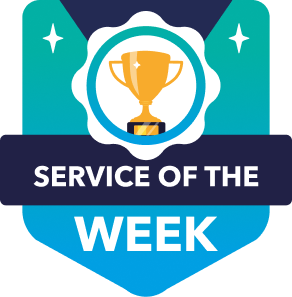Search engine optimization (SEO) involves lots of moving parts to make your website rank on top of search engine results pages (SERPs).
As a result, getting lost in your SEO campaign is easy, especially if you're trying to do everything on your own.
And while it's possible to manage the results of your SEO strategy, you must know first which metrics to track. This enables you to understand the progress of your campaign to determine whether it's a success or not.
To do this, you also need to know which tools you must use to help you gather data for these metrics. From here, you can also determine what you must do to improve the results by generating more organic traffic to your site.
Let's begin with this guide about tracking SEO performance by discussing the variables you must monitor.
Identify SEO KPIs
Just like any marketing initiative, SEO has key performance indicators (KPIs) that will help you make sense of your SEO efforts thus far.
Tracking SEO means you have to wait for months before you see your campaign results.
A lot has been said about how long SEO takes before your efforts kick in. It ultimately depends on whether you created the best possible content for the topic and built backlinks from high-quality websites. If that's the case, expect good results within 3-6 months, according to Ahrefs.

Search engine algorithms take time to update SERPs due to the volume of content and backlinks they must process over a period.
So, you may have to wait a bit longer if you don't see any organic traffic movement on your end. SEO is merely a waiting game, especially if you've covered all your bases properly.
That said, below are the most important SEO KPIs you must track a few weeks or months after implementing your SEO strategy:
Organic Traffic
This key performance indicator refers to the number of visitors your website receives in a period.
As mentioned, organic traffic tends to be flat for the first few months of a website with a new (not aged) domain. But once it puts up organic traffic within this period, wait a few more days for the data to stabilize.
IF the data shows consistent traffic ranges over time without any decreases, your SEO worked.
Organic Keyword Rankings
You can directly attribute your increased organic traffic to the number of keywords your site is ranking for.
To fully understand this, you must know how many clicks a page receives on SERPs, depending on its search position.
According to Advanced Web Ranking, pages ranking in the first position of organic search without featured snippets (images, People Also Ask, local pack, etc.) receive 42.76% of clicks. The second and third positions are far behind, with 13.91% and 8.19%, respectively.

Even if you factor featured snippets into organic search, expect the first to third position to rake in the most traffic from SERPs.
So, if you are generating hundreds and thousands of traffic from Google and other search engines, your site ranks for organic keywords with lots of search volumes.
For example, if a keyword has 1,000 monthly searches, ranking for that term in the first position would get you approximately 426 visitors in a month (1,000 * 0.4267).
Now, imagine if you can rank on top of keywords with similar search volumes—if not more. You can expect to multiply your organic search traffic in no time!
At the same time, ranking for these keywords is easier said than done. For new sites, you'll only rank on top of SERPs for keywords with low search volume (between 10-100 monthly searches).
Later, we will discuss how you can successfully target and rank for keywords with high search volumes to expedite your SEO progress.
Core Web Vitals
According to the Page Experience Update in 2021, how efficient your website loads is now a ranking factor.
Remember that we're not just talking about site speed (largest contentful paint) here.
The update now considers the time users wait after interacting with an element on your site (first input delay) and how stable your site layout is after loading different elements onto a page (cumulative layout shift).
All these factors comprise your site's Core Web Vitals score.

Backlinks
Your SEO success depends on two factors: backlinks and content.

According to uSERP, the third most vital ranking factor is Rankbrain.
But let's talk about backlinks first, arguably the most important SEO factor.
The links pointing to your site are a way for Google to understand your site's trustworthiness.
For example, the search engine won't think twice if you have backlinks from thousands of low-authority and irrelevant websites.
But suppose you have a single backlink from a prestigious website like The Guardian, CNN, or even Wikipedia. In that case, Google will consider the link when indexing your website on search results.
The reason is that the aforementioned sites have built their authority and trust through the years. So, a link from those websites bears more weight than many backlinks from less reputable sites.
And by building many authoritative links from similar trustworthy websites, you can rank faster and higher on search results.
However, link building is easier said than done. Sure, there are many ways you can secure high-quality backlinks, like HARO link building, link buying, and others.
But as off-page factors, there are lots of variables that go against your favor. One of them is that you have no control over how site owners will treat your links over time.
Of course, this only becomes a problem if an authoritative website owner links to your website from theirs, which is a problem in and of itself.
Content Performance
The reason above is why content is just as important as a ranking factor. In fact, some would say that it's more important than backlinks to a certain extent.
And with the latest Helpful Content Update, people need to start taking their content creation process more seriously than ever.
The biggest obstacle with tracking content after this update is determining what makes "helpful" content due to its qualitative nature.
Nowadays, it's not enough to get a "green" or high score on your SEO tool for your content. It's also no longer true that you should write a certain number of words in your content to rank on search results.
Some would say that you should create content your readers want to read. Or you must be an expert in your website's topic to be able to rank on top of Google even without backlinks.
But these factors depend on your industry and audience there's no uniform standard for determining "usefulness" in this sense.
This may be good for some, especially experts who know the topic like the back of their hand. It gives them an advantage over site owners who depend on traditional SEO metrics like low keyword difficulty and sprinkling LSI keywords when writing blog posts.
Must-Use Tools for Tracking SEO Performance
Now that we've discussed the most vital SEO KPIs to monitor, it's time to determine how you can find them using various tools and software.
Just as important as finding these metrics is to generate insights from these data to help you understand what you must do to improve the results.
There are various SEO tools available in the market you can use to find these KPIs. But below are the best possible ones to help you get the job done:
Google Search Console
Google Search Console (GSC) provides data to help you understand your site's SEO performance.
It shows you how many users saw your site pages on SERPs and how many of them clicked on your page.

From here, you can identify which pages received the most impressions and clicks for which search queries.

You can also see other factors, such as which countries you received the most clicks from, the devices most of them used, and more.
If you want to see which pages failed to reach the passing grade for Core Web Vitals, you can find them under Experience > ore Web Vitals.

Using the information here, you can identify which pages on your site need improvement. Aside from slow-loading pages, the queries your pages are rating impressions of open up SEO opportunities for your site.
For example, collect all user queries that show your site pages on SERPs. Once gathered and organized, consider including these terms in your pages to help increase their rankings and generate more traffic to your site.
By mentioning these terms on the page, you may increase its chances of ranking even higher for these terms, resulting in higher organic traffic soon (provided that lots of people search for this term).
Google Analytics
Google Analytics (GA) is another analytics tool that's less focused on SEO and more on your website as a whole.
You will still see your website's traffic from your Google Analytics account. But the data considers visitors from channels aside from search engines.

It also measures your content's effectiveness based on the page's bounce rate and average time on site, among others.

Ideally, the lower the bounce rate and the longer users spend on your pages, the better and "stickier" your content is.
If you're already using Google Analytics 4, it provides insights based on the gathered data and recommendations on how to improve your site's overall performance further.

Google PageSpeed Insights
You can already access your pages' Core Web Vitals score on GSC. But if you want a complete breakdown of a specific page's CWV score, enter its URL on Google PageSpeed Insights.
The result shows you the page's score broken down into three critical factors.

The great part about PageSpeed Insights is that it shows you how to resolve issues preventing your site pages from getting a much higher CWV score.

Some of the issues are not that difficult to fix, but the rest will require some knowledge in web development.
SERPRobot
As you saw earlier, GSC shows you the search phrases for which your site page is getting impressions. But it doesn't tell you which position your terms rank for on SERPs.
So, as valuable as Google Search Console is, you still need a rank tracking tool to help you make sense of your SEO efforts.
Ideally, this tool lets you enter the keyword you want to track on your site and tells you which position on organic search the page ranks. It then continues to monitor your position over time so you can see whether your SEO campaigns helped your site increase its rankings or not.
Among the different ranking tracking tools available, SERPRobot is mentioned here because it has a free feature that lets you track SEO rankings for a maximum of five (5) keywords on demand.

After entering your website and keywords, the tool will show you which among your site pages is ranking for which search terms.

SERPRobot allows you to compare your site's keyword rankings over time, but you must subscribe to one of its free plans to access this.
Ahrefs
A lot has been said about Ahrefs over the years. But when it boils down to it, no other SEO tool provides the volume of data and ease of use that Ahrefs brings to the table.
As an all-in-one SEO tool, it also has keyword ranking features to help you determine how your SEO strategy and campaign have impacted your site's organic growth.
However, rank tracking is not Ahrefs' strongest suit. It shines through its backlink analysis features, where you can review your site's link profile and determine your best and most potent backlinks.

This is made more accessible for you thanks to Ahrefs' Domain Rating (DR) metric, which computes the strength of a site based on its backlinks as well.
The higher the DR of a site that links to you, the more effective the backlink is.
Ahrefs also lets you see which backlinks you've lost over time as part of its legacy features.

Checking this section from time to time can help you make sense of your site's SEO performance.
For instance, if your site's traffic dropped, maybe it's because you lost a backlink from a reputable website. You can only find this if you check the tool's Lost backlinks section.
From here, you must find a way to recover the backlinks to get your organic search results back on track.
Another useful feature of Ahrefs is its Site Audit tool. It analyzes your website using a comprehensive list of ranking factors to see how optimized your site is.

The tool scores every audit report from 0 to 100 (100 being the most optimized). This means search spiders can crawl and index your site pages without issues.
If your site has a low audit score, Ahrefs provides solutions to the potential problems causing your site's low traffic. You can follow its suggestions to fix each issue and run another audit scan to see if you were able to resolve them successfully.
The great thing about Ahrefs' Site Audit is that it's free as part of its Webmaster Tools account. Sign up for an account and add sites connected to your Google Search Console to create SEO reports free of charge.
Surfer SEO
Manually analyzing your content for its effectiveness is a time-consuming—albeit necessary—process. Surfer SEO is here to help you expedite the process.
The tool is famous for helping you create content optimized for your target keywords. But, assuming you want to review the content you've published thus far, Surfer SEO has other features to help you in this regard.
Its Content Planner allows you to analyze all pages on your site based on how optimized they are for their respective keywords.
To use this feature, you must connect your Google Search Console account to Surfer SEO. From here, the tool will analyze the data from GSC to check the search terms driving impressions to each of your site pages.
From here, Surfer SEO shows you pages ranking just outside the first page of organic search for their keywords.

You must then re-optimize them using the tool's Content Editor and achieve a much higher score than the one the tool shows you.
When optimizing, remember that achieving a high Content Score in Surfer SEO doesn't guarantee high organic rankings. So, use your judgment and common sense when re-optimizing pages using this tool.
Ways to Improve SEO Performance
We have discussed the tools that will help you track the metrics relevant to your site's SEO performance. You should have all the data you need to determine your previous SEO campaign's success.
At this point, you must extract insights from the data on how you can make your SEO campaign even better. After all, what's the point of tracking if you don't have plans to improve your SEO strategy?
Using the same tools and metrics above, below are things you can do to help rebuild your SEO initiative. This way, you can launch a new and improved campaign poised to generate more organic traffic.
Publish Useful Content
As mentioned, the latest Helpful Content Update is a way for Google to tell publishers to create content geared towards people and not search engines.
To do this, you must first determine your topic or keyword's search intent.

When creating content, you should align it based on the three types of search intent above.
For instance, if your keyword has an informational intent, the content must answer a specific question. You can't aggressively recommend your products and services in it because it's not what users want to see from it.
Ahrefs has a keyword research feature that lets you identify search phrases with the most monthly searches and the least competition.
But SEMrush is the only one that currently has a keyword intent feature. Type your topic using its Keyword Magic Tool and see each term's search intent to help build your content strategy.

Also, you need to know the topic you're writing about or publishing like the back of your hand.
It all boils down to E-A-T, which means expertise, authoritativeness, and trustworthiness. This acronym first appeared on the Google Search Quality Raters Guidelines document, which talks about how Google employees determine which search terms a page should rank for.
While E-A-T isn't a ranking factor, the latest algorithm update concerning content further amplifies its importance.
Creating content showcasing your knowledge about the topic helps solidify your position in your industry. And by publishing as much helpful content on your site as possible, you will eventually gain the trust of your audience.
If you aren't good at writing content, you can always enlist help from experts who can do the writing for you.
Increase Topic Relevance
Concerning publishing lots of content on your website, limit the scope to your topic of expertise.
If your site is about fitness, you may want to narrow your topic to any of its subtopics, like bodybuilding or weight loss. You can even go granular by breaking down these topics into smaller ones (powerlifting or ketogenic diet).
From here, you must exhaust angles you can write about a specific topic.
The point of doing all these is to achieve topic relevance.
If you've created great content about every question people may have about ketogenic diet, for instance, Google has no choice but to start indexing your site on SERPs for search terms relevant to your topic.
After publishing these pages, you must structure them to help Google and other search spiders crawl and index them much more quickly.
One of the best ways of doing that is by creating topic clusters. Basically, you must link together web pages with the strongest relevance. Each cluster must have supporting pages (informative articles answering questions about the topic) linking to a pillar page (the main page you want to rank for). Here's one way a topic cluster looks like:

Creating different clusters to cover your topic's scope is a great way to get picked up by Google and grow your site's organic traffic.
Make Your Site Load Better
Page speed has grown in importance as an SEO KPI.
It's not enough to provide value to your audience—you must also ensure that the value you're offering is easily accessible. And making your site load as fast as possible is a way to do this.
Let's say your site doesn't have impressive CWV scores, and PageSpeed Insights provided you with suggestions that are beyond your wheelhouse.
You must hire page speed optimizers to fix the issues before things get out of hand.
Or you can take things into your hands and speed up your website by doing the following:
Move to a different hosting provider
A slow-loading website's underlying problem is a poor-performing web host.
If you have yet to subscribe to the best and fastest hosting sites, consider migrating to any of these platforms now.
Most of them allow you to transfer your website from your previous hosting to the new one via a plugin or concierge service.
Use a caching plugin
A caching plugin lets you save data from your site to the visitor's browser. This way, the files load from the browser when they revisit your site, which means faster and more efficient loading.
WP Rocket is one of the best caching tools with additional features such as GZIP compression, file optimization, database cleanup, and more.
Use a content delivery network
A content delivery network (CDN) stores your website's files in different data centers across the globe. When a user visits your site, it loads data from the nearest data center instead of the hosting servers.
Visitors' proximity to the data center allows for faster loading of your website on their browsers.
Cloudflare is one of the best free CDNs you can use out of the box, and it's robust enough to run even on medium-sized websites.
Build Natural Backlinks
It's impossible to talk about improving SEO performance without bringing up link building.
Whether you like it or not, you must build high-quality dofollow backlinks for search engines to rank your landing pages high on search rankings.
More importantly, you must ensure that the links appear natural in the eyes of Google.
The search engine has clarified that link schemes will do more harm than good on your site.
Instead, always go the natural and white hat route.
Guest post outreach services remains one of the most effective ways to build backlinks since you create value for your link partners through well-crafted guest posts. In exchange, they will reward a link within the content to your website.
You may launch the outreach campaign on your own or hire someone else to do the job for you. Either way, you must build good links to get the most out of your SEO optimization efforts.
Conclusion
The first months of your SEO initiative will be the most difficult. You'll have to wait for months before your campaign takes effect. And you'll have to make the necessary changes to improve its performance when it does.
To get there, knowing which SEO goals to track and monitor using various tools. This way, you can slowly scale your efforts to build your website's organic traffic until you reach hundreds and thousands of daily organic visitors!
Hopefully, this post has helped you better understand what it takes to track SEO campaigns and measure your site's organic performance.













 Download
Download